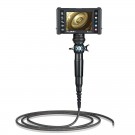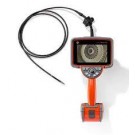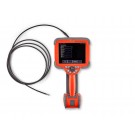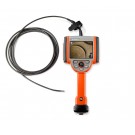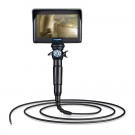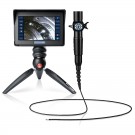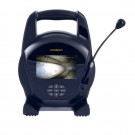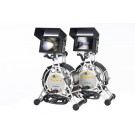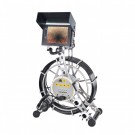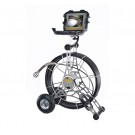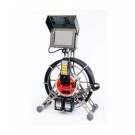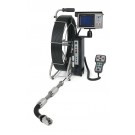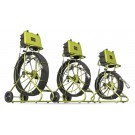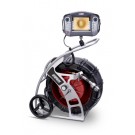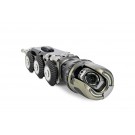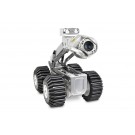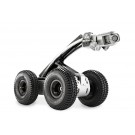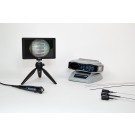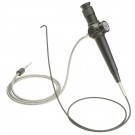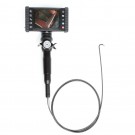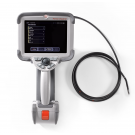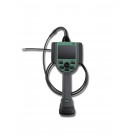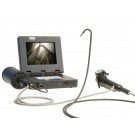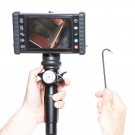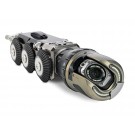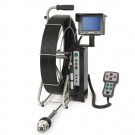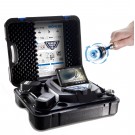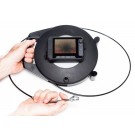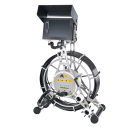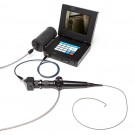AIT is moving our blog and we would like to bring along some of the past video borescope rental that we have done for a wide variety of applications over the past several years.
Videoscope Rented To Retrieve Objects From Transformer
Monday, August 6, 2012 8:45:02 AM America/New_York
AIT Adds 4mm Diameter Borescope to Rental Pool
Friday, June 22, 2012 3:35:08 PM America/New_York
Borescope Inspection Of Large Cavities
A large cavity usually requires a large amount of light to successfully conduct a remote visual inspection with a rigid borescope. This simply requires the largest possible borescope. If the borescope can be rigid it will be a simple matter to focus at therequired distances.
If the borescope needs to be smaller due to access limitations, multiple access points should be investigated. Tools can be made to deliver a smaller scope to defined points within the cavity. Auxiliary lighting probes can be produced to help deliver light in addition to the light from the borescope probe.
If a semi-rigid borescope is desired for durability, a tip focusing scope can focus at multiple distances. Another advantage of a tip focus scope is the brightness can be better than an equivalent rigid scope. If the access is restricted only in one dimension, probes can be built to take advantage of the space available to maximize illumination. In the case of a slit access, the probe can be built with tubes placed adjacent to carry more lighting fibers and higher resolution image optics.
Borescope Inspection Of Intersecting Passages
 Typical Rigid Borescope Mirror Tube
Typical Rigid Borescope Mirror TubeIntersecting passages can be viewed using a rigid borescope or semi-rigid borescope with the appropriate direction of view. If coaxial lighting is needed to view into a very small passage, a mirror tube may be needed. However, if the passage is large enough it can be illuminated using separate prisms. If intersecting passages are to be viewed, a mirror tube may be the best way to achieve the direction of view. A mirror tube is a close fitting tube that slips over the OD of the scope to position a mirror at the tip of the scope to reflect the image and illumination at 90°. While mirror tubes are very susceptible to dirt, they offer a coaxial lighting effect that helps to view deeply into a passage at right angles to the scope axis. When the passage is at an angle other than 90°, a mirror tube may not be the appropriate solution.
A flexible borescope may be needed to enter the intersecting passage, and a tool of some kind can be used to help the scope around the bend. Normal practice has been to use articulating borescopes for this, but they are not necessary. Standard borescope products will do a good job if they can be guided into the passages. They can also be customized for special requirements.
Close Fitting Inner Diameter Borescope Inspection
 When a borescope is being used to inspect the inside wall of a bore the following considerations are important. If a view directly at the wall is desired, and the borescope is a close fit in the bore, the focus and illumination must be optimized for this condition. A direction of view between 110° and 70° can be used depending on the condition of the wall. The reason for choosing a direction will depend on what is trying to be seen, and the reflectivity of the wall. Highly polished walls are very difficult to view. The polished surface reflects the light away so that almost no light gets reflected back into the borescope. When looking at welds that have a flatter finish, the scope will be able to inspect the welded area, but the polished area will be difficult to inspect. A straight ahead, or 0° direction of view can also be used to view the walls of a close fitting bore. Sometimes a very wide field of view is used to optimize the view of the wall and minimize the view down the center of the bore. The 0° direction can be used to view the entire ID at once without needing to scan the wall as in the side viewing borescopes described above.
When a borescope is being used to inspect the inside wall of a bore the following considerations are important. If a view directly at the wall is desired, and the borescope is a close fit in the bore, the focus and illumination must be optimized for this condition. A direction of view between 110° and 70° can be used depending on the condition of the wall. The reason for choosing a direction will depend on what is trying to be seen, and the reflectivity of the wall. Highly polished walls are very difficult to view. The polished surface reflects the light away so that almost no light gets reflected back into the borescope. When looking at welds that have a flatter finish, the scope will be able to inspect the welded area, but the polished area will be difficult to inspect. A straight ahead, or 0° direction of view can also be used to view the walls of a close fitting bore. Sometimes a very wide field of view is used to optimize the view of the wall and minimize the view down the center of the bore. The 0° direction can be used to view the entire ID at once without needing to scan the wall as in the side viewing borescopes described above.
Micro Borescopes Inspect the Smallest Applications
Micro borescopes are typically used to remotely inspect the smallest application. Some remote visual inspection applications require access through tiny holes that are less than 2.0 mm (0.078 in). A micro borescope or mini borescope may be semi-flexible or rigid. Typically these small borescopes are limited in length and direction of view is 0° forward with the option for side view mirror sleeves.
These small inspection areas provide remote visual inspection professionals with many challenges. The access dictates the inspection requirements more than any other factor. The smaller the inspection area the more limited the choice of micro borescopes available and the number of manufacturers of these mini borescopes. Finally, Due to the nature of a micro borescope, it is more susceptible to damage. Users need to be aware of the limitations of smaller diameter borescopes and fiberscopes and work within these.
Applications for Micro Borescopes:
• Engineering & Manufacturing. Micro Borescopes provide cost-effective examination of internal structures without tear down. A micro borescope allows engineers to check for pitting, cracking, corrosion, erosion, weld and other defects.
 • Quality Control. Micro Borescope instruments allow manufactures to inspect components for defects. Mini borescopes provide the ability to inspect internal components, bore holes, castings and other manufactured items such as turbine blades, automotive components, circuit boards, rifle barrels and welds.
• Quality Control. Micro Borescope instruments allow manufactures to inspect components for defects. Mini borescopes provide the ability to inspect internal components, bore holes, castings and other manufactured items such as turbine blades, automotive components, circuit boards, rifle barrels and welds.
• Castings. Micro Borescopes can be used to inspect inside casting of engine blocks and other high quality casted components. Micro Borescope instruments as small as 0.5 mm in diameter and larger are offered to accommodate all casting inspection needs.
5 Item(s)

